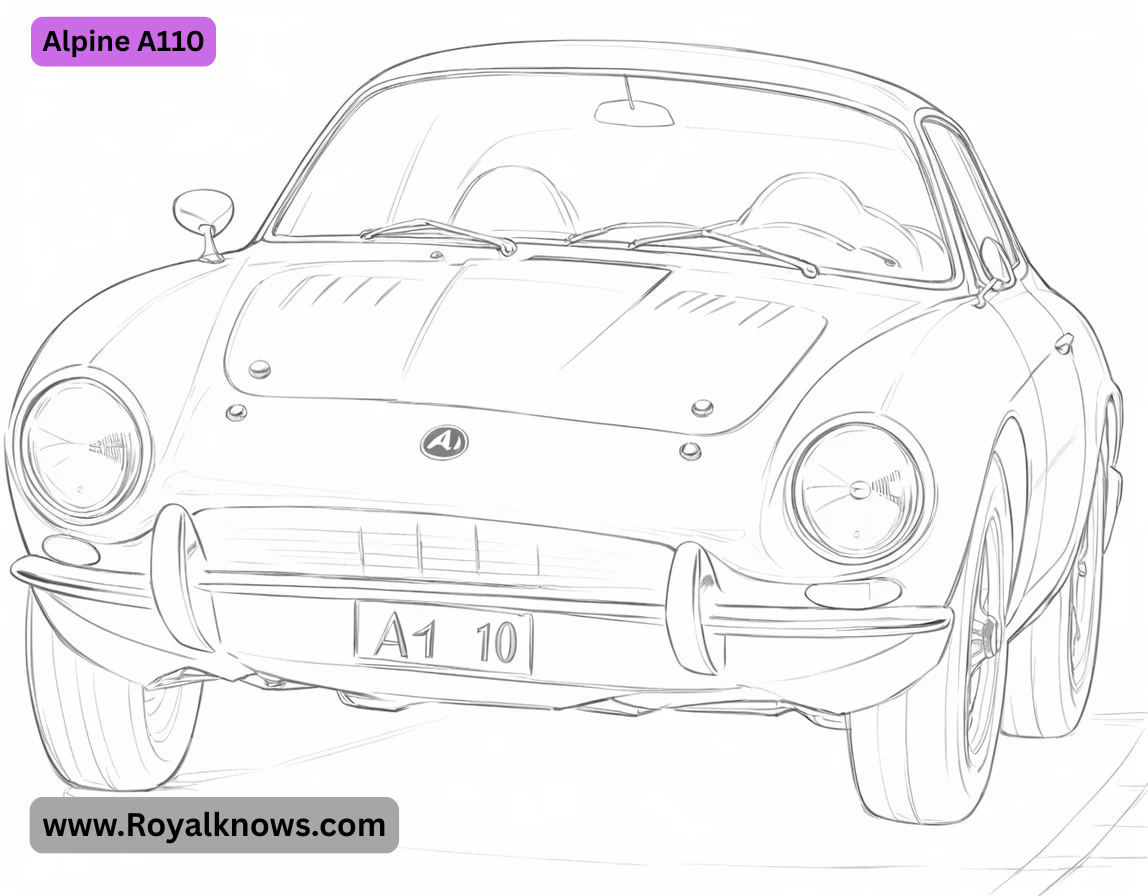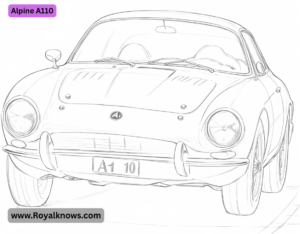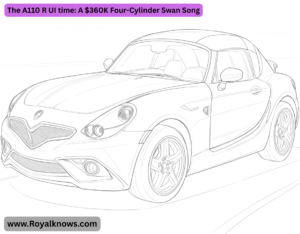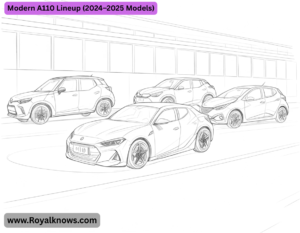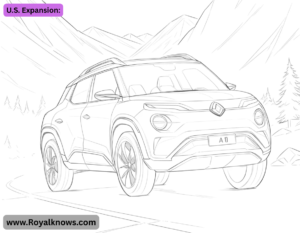Alpine A110 The Alpine A110 is a lightweight, mid-engine sports car produced by the French manufacturer Alpine, a subsidiary of Renault. It is available in several variants, each offering a unique blend of performance, agility, and design. Below is a detailed overview of the A110, covering its history, specifications, and modern iterations.
1. Historical Background
- The original Alpine A110 (1963–1977) was a rear-engine, rear-wheel-drive sports car that gained fame in rally racing, including victories in the Monte Carlo Rally and the 1973 World Rally Championship.
- The modern A110 (2017–present) is a spiritual successor, retaining the lightweight philosophy and mid-engine layout but with contemporary engineering.
2. Modern A110 Models (2024–2025)
- A110 (Base Model)
- Engine: 1.8L turbocharged 4-cylinder, 252 HP, 320 Nm torque.
- Performance: 0–62 mph in 4.5 sec, top speed 155 mph.
- Weight: From 1,102 kg (varies with options).
- Features:
- Aluminum chassis for rigidity.
- 7-speed dual-clutch transmission (DCT).
- 7-inch touchscreen with Apple Car Play/Android Auto.
S (Sportier Variant)
- Engine: Upgraded 300 HP, 340 Nm torque.
- Performance: 0–62 mph in 4.2 sec, top speed 171 mph.
- Weight: From 1,109 kg.
- Enhancements:
- Stiffer suspension, forged wheels, optional carbon roof.
- Active sports exhaust for a more aggressive sound.
GT (Grand Tourer)
- Engine: 296 HP, 250 IB-FT torque.
- Performance: 0–62 mph in ~4.2 sec, top speed 155 mph.
- Features:
- More luxurious interior (6-way adjustable seats).
- Softer suspension than the A110 S for comfort.
R (Track-Focused)
- Engine: 300+ HP, lightweight carbon fiber body.
- Weight: 1,082 kg (lightest variant).
- Features:
- Adjustable dampers, Brembo brakes, aggressive aero.
3. Key Features & Driving Experience
- Lightweight Design: Aluminum construction keeps weight low (~1,100 kg), enhancing agility.
- Handling: Double-wishbone suspension provides sharp, communicative steering.
- Fuel Efficiency: Achieves ~40 mpg (EU cycle), better than rivals like the Porsche Cayman8.
- Customization: Offers bespoke paint, stripes, and interior trims.
4. Pricing (UK)
- A110 (Base): From £54,490.
- A110 GT: From £65,490.
- A110 S: From £67,490.
- A110 R: £96,9908.
5. Reception & Comparisons
- Praise: Critics love its lightweight dynamics, calling it more engaging than the Porsche Cayman at lower speeds.
- Criticisms: Limited storage, no manual transmission, and fiddly infotainment.
- Future: An electric A110 is planned for 2027, potentially coming to the U.S.3.
The A110 R UI time: A $360K Four-Cylinder Swan Song
- 265000(360,000)∗∗for the” La BLEUE “ edition(15units)and∗∗€265,000( 290,000) for the standard UI time .
- Key upgrades:
- Engine: 1.8L turbocharged 4-cylinder tuned to 345 HP (up from 300 HP in the A110 R) and 310 IB-FT torque .
- Performance: 0–62 mph in 3.8 seconds (faster than the standard A110 R’s 4.0 sec) and a top speed of 177 mph .
- Chassis: ÖHLINS adjustable dampers, AP Racing brakes, and carbon-fiber body panels (hood, roof, rear wing) .
Criticism: Priced higher than a Mc LAREN 750S (318K)∗∗or∗∗Porsche911Turbo(199K), raising eyebrows for a four-cylinder car .
2. Current A110 Line up (2025 Models)
- Base A110: Starts at £54,500 (UK), with a 252-hp 1.8L turbo engine, 0–62 mph in 4.5 sec .
- A110 GT: Priced from £65,500, adds luxury features (Focal audio, leather seats) but retains the same 300-hp engine as the A110 S .
A110 R TURNINE: £92,170, featuring carbon-fiber parts, semi-slick tires, and F1-inspired aerodynamics .
3. Driving Experience
- Lightweight Agility: Weighing ~1,100 kg, the A110 excels on twisty roads with precise steering and supple suspension, outperforming rivals like the Porsche Cayman in driver engagement .
- Criticisms: Poor rear visibility, basic infotainment (sourced from Renault), and limited storage (196L total) .
- Track vs. Road: The base A110 is praised for comfort, while the R variants are stiff and best suited for circuits .
4. Alpine’s Electric Future
- An electric A110 is confirmed, alongside crossovers like the A390 .
- U.S. Expansion: Alpine will enter the U.S. by 2027 with two electric SUVs (midsize and large), though the A110 EV isn’t slated for America yet.
5. Historical Context
- The modern revival (2017–present) honors its lightweight ethos .
Key Takeaways
- The A110’s brilliance lies in its lightweight, analog driving feel, but the R ULTIME’s price is controversial.
- Future models will prioritize EV performance, with crossovers targeting Porsche’s SUV lineup .
1. Historical Background
- Original A110 (1963–1977):
- A lightweight, rear-engine sports car designed by Giovanni MICHELOTI, initially with a 51 HP engine, later upgraded to 180 HP for rallying .
- Dominated rally racing, winning the 1973 World Rally Championship and securing 1-2-3 finishes at the Monte Carlo Rally .
- Built under license in Mexico (” DINAL pin”), Bulgaria (“BULGARAL; pine”), and Spain (FASA) .
- Revival (2017–present):
- A spiritual successor with a mid-engine, rear-wheel-drive layout, honoring the original’s design and lightweight philosophy .
- Developed by Alpine (a Renault subsidiary) with an all-aluminum chassis and body .
2. Modern A110 Lineup (2024–2025 Models)
- Base A110
Performance: 0–62 mph in 4.5 sec, top speed 155 mph . - Weight: 1,102 kg (lightest variant) .
- Key Features:
- Double-wishbone suspension, Brembo brakes .
- 7-inch touchscreen with Apple Car Play/Android Auto .
Engine S
- Engine: 300 HP, 340 Nm torque .
- Upgrades: Stiffer suspension, forged wheels, active sports exhaust .
Criticism GT
- Engine: 296 H[, tuned for comfort .
- Criticism: Some reviewers found its ride less refined than the base model .
R (Track-Focused)
- Engine: 300+HP, 3.9 sec 0–62 mph, top speed 177 mph .
- Weight Reduction: Carbon fiber body panels (e.g., roof, hood) drop weight to 1,082 kg .
- Aero: Generates 160 kg of downforce.
Special Editions
- R ULTIME: Limited to 110 units, priced up to €330,000, with 345 HP .
- Gendarmerie Edition: Police-spec A110s used by French authorities .
3. Driving Experience
- Lightweight Agility:
- Praised for its “fluent” chassis and balance, especially in the base model .
- Criticisms:
- Limited storage (196L total), basic infotainment, and no manual transmission .
- A110 S’s stiff ride can be jarring on rough roads .
4. Pricing (UK)
- Base A110: From £54,490 .
- A110 S: From £68,170 .
5. Future Plans
- U.S. Expansion: Alpine plans to enter the U.S. market with electric SUVs, though the A110 EV’s availability is unconfirmed.
Key Takeaways
- Heritage Meets Modernity: The A110 blends retro styling with cutting-edge engineering, staying true to its lightweight ethos .
- Driver’s Car: Prioritizes engagement over raw power, with the base model often cited as the sweet spot .
- Controversial Pricing: High-end variants (e.g., A110 R ULTIME) rival supercars despite modest power .
- EV Future: The combustion A110’s days are numbered, but its spirit may live on in electric form.
Hidden Rally DNA
- The modern A110’s suspension geometry was secretly tested on a modified Renault MEGANE RS chassis before the first prototype was built
- Alpine engineers benchmarked the original A110’s rally suspension setups, adapting the double-wishbone design from 1960s blueprints
- The exhaust note was tuned to match frequencies recorded from historic rally footage
Secret Lightweight Tricks
- The aluminum chassis uses aerospace-grade alloys originally developed for Airbus wing assemblies
- Every bolt was weight-optimized – engineers saved 1.2kg just by redesigning fastener lengths
- The infotainment screen is deliberately small to avoid requiring heavier structural reinforcements
Racing Tech Trickle-Down
- The A110 R’s carbon roof comes from the same supplier as Formula 1 halo devices
- Brake cooling ducts were reverse-engineered from Alpine’s LMP2 race car
- The rear diffuser design was tested in Renault’s F1 wind tunnel
Get article on pdf file…. Click now
…….Alpine A110……
